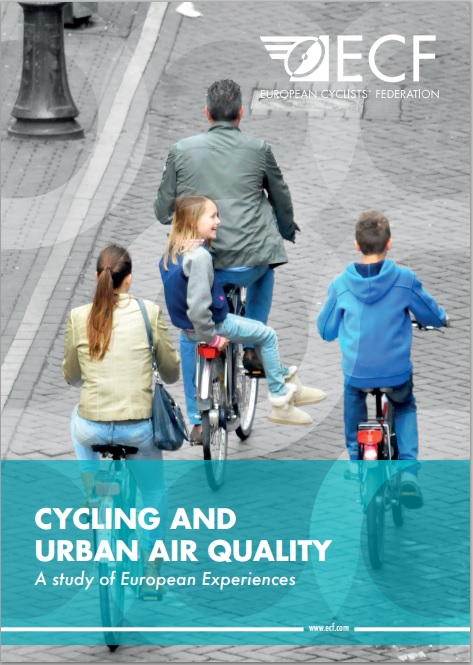
Less cars, more bicycles, better air quality
Photo credit Christiane Blanchard
Brand new study published today shows achievable and realistic way to cut air pollution from transport is getting more people out of cars and onto bicycles.
The study commissioned by ECF calculates the reduction in typical transport pollutants NOx, NO2 and PM10, focusing on 5 European cities: Antwerp, London, Nantes, Seville and Thessaloniki.
ECF’s main conclusion from this study is that the bolder the measures taken by the authorities, the better the results for air quality. City authorities who want to protect their citizens from health risks due to bad air quality, have to act thoroughly. Secretary General of ECF, Bernhard Ensink, explains: “Transport systems in European cities need to be transformed drastically. Motorised traffic has to be reduced. We recommend cities to invest in large scale and high quality cycling networks and extensive car-free zones. Keep your city vibrant, by switching from motorized transport to cycling.”
The health benefits for citizens kick off immediately. Even with the smallest improvement in air quality, the potential years of life lost due to premature death and years of healthy life lost due to poor health or disability decrease[1]. In addition, climate change, noise, access to mobility and economic benefits should be taken into account when authorities discuss cycling investments from the point of view of air pollution.
Technical measures[2] such as Euro standard emission norms for vehicles, which have been in place for over 20 years didn’t succeed in decreasing the air pollution from the transport sector sufficiently. Many Member States & cities are still not complying with EU limit values[3]. Vehicles are still polluting more than expected[4], motorized traffic has increased and there is a higher share of diesel cars. The scenarios proposed in the study measure the impact of non-technical measures, such as increasing cycling and car-free-zones, to improve air quality. They are realistic and achievable by many cities in a short time. The stronger these measures are, the better the results for air quality.
For ECF the city of Seville is an example of what can be done. Seville’s cycling mode share increased from 0.5% to 7% in a few years, thanks to serious investments in cycling and substantial measures to reduce motorised traffic, which allowed the city to comply with the EU Limit Values for air pollution. This example and similar actions taken by cities like Milan, Paris, Basel, Munich, Hamburg, Helsinki and Ghent show the lead for other European cities.
Benedicte Swennen, ECF’s Urban Mobility Policy Officer, adds: “We want to point out that this battle should not be left to cities alone. Air pollution travels freely across city and state borders and cities do need support from Member States and Europe.” Cities are actually asking for more ambitious national and European policies to support their local actions for cleaner air.[5]
Together with the cities, our members and partners, ECF asks the European Commission to continue the work on the Clean Air Package and to make Euro standards more effective. The EU especially needs to encourage cities to improve urban air quality by reducing motorized traffic and increasing cycling.
[1] Based on DALY rates: http://www.who.int/healthinfo/global_burden_disease/metrics_daly/en/
[2] Technical measures related to air quality are usually technological improvements on vehicles.
Non-technical measures are focusing on structural and behavioural changes (infrastructure, bike share, LEZ, congestion charging, car-free zones, etc).
[3] As of 2012, 17 EU Member States remained in breach of limits for PM10, while 22 remained in breach of limits for NO2 http://www.clientearth.org/reports/20140515-clientearth-air-pollution-clean-air-handbook.pdf
Topics:
- Log in to post comments
Contact the author
Recent news!
Upcoming events
Contact Us
Avenue des Arts, 7-8
Postal address: Rue de la Charité, 22
1210 Brussels, Belgium










